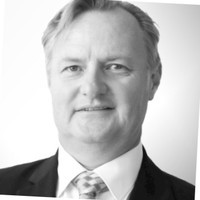- Video Library
- David Neale, Arga Medtech - Cardiac Ablation System | LSI Europe '22
David Neale, Arga Medtech - Cardiac Ablation System | LSI Europe '22

David Neale
Over 25 years experience in managing and shaping businesses in the medical field, covering general commodities, services and medical devices in the fields of cardiology, renal therapies, neuromodulation and orthopedics. Head of AF Solutions for Medtronic in Europe/ Asia, with responsibility to integrate Cryocath Laboratories and Ablation Frontiers acquisitions into the Medtronic AF portfolio.
Proven experience in establishing new businesses. Entrepreneurial and strategic attitude towards identifying and exploiting opportunities and strong leadership in implementing value driven plans. Good track record in the development and launch of new products, exploring new businesses, business models and setting up multiple channels of distribution. Experienced in negotiating with high ranked government officials, c-suite and negotiating mergers and acquisitions.
Strong and effective leader in coordinating projects across all functions, including engineering, R&D, clinical, regulatory and finance.
Start up, small/medium (PME) enterprise coach and mentor.
B.S. degree in Pharmacy-Biochemistry and Masters in Industrial Administration and MBA from the University of Sao Paulo Brazil
David Neale
Over 25 years experience in managing and shaping businesses in the medical field, covering general commodities, services and medical devices in the fields of cardiology, renal therapies, neuromodulation and orthopedics. Head of AF Solutions for Medtronic in Europe/ Asia, with responsibility to integrate Cryocath Laboratories and Ablation Frontiers acquisitions into the Medtronic AF portfolio.
Proven experience in establishing new businesses. Entrepreneurial and strategic attitude towards identifying and exploiting opportunities and strong leadership in implementing value driven plans. Good track record in the development and launch of new products, exploring new businesses, business models and setting up multiple channels of distribution. Experienced in negotiating with high ranked government officials, c-suite and negotiating mergers and acquisitions.
Strong and effective leader in coordinating projects across all functions, including engineering, R&D, clinical, regulatory and finance.
Start up, small/medium (PME) enterprise coach and mentor.
B.S. degree in Pharmacy-Biochemistry and Masters in Industrial Administration and MBA from the University of Sao Paulo Brazil

17011 Beach Blvd, Suite 500 Huntington Beach, CA 92647
714-847-3540© 2025 Life Science Intelligence, Inc., All Rights Reserved. | Privacy Policy







